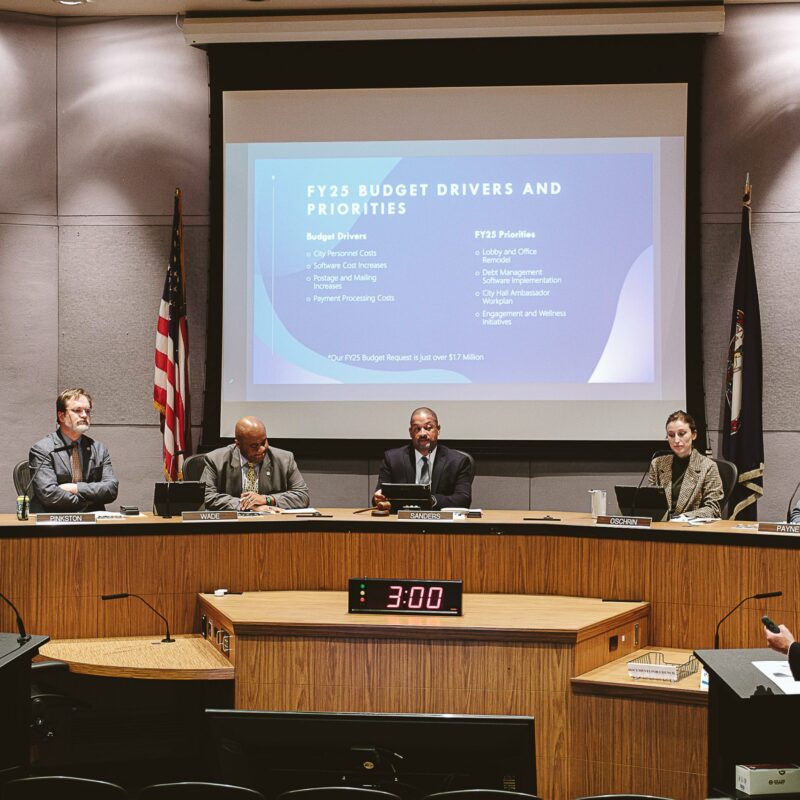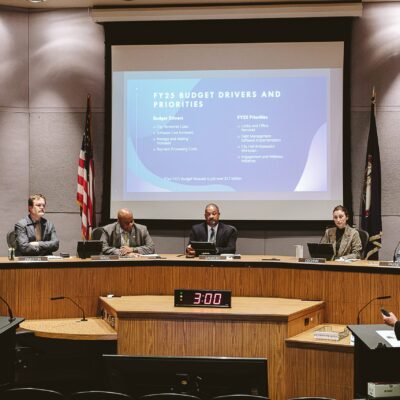Here at the Odd Dominion, we don’t often fantasize about what changes we’d like to make to America’s electoral system. Truth be told, we mostly enjoy the sloppy, imperfect, idiosyncratic way the American people choose their representative government—and we like the endless conflict and countercharges of fraud and deceit that accompany all elections, no matter how small, even more.
|
Whose district will get dissed and dismissed? The Democrat-majority Senate wants to wage Red-on-Red warfare in Virginia Beach, while the Republican House hopes to isolate and alienate House Minority Leader Ward Armstrong. |
But if the ghost of Thomas Jefferson were to appear at our bedside and grant us one election-altering wish, it would be this: That all redistricting decisions be taken out of human hands and assigned to a robot, which would simply crunch the census data every 10 years and draw perfectly square boundaries based on nothing but the number of people in each district. That’s right—no gerrymandering by age, race, sex, or perceived affinity for fat politicians. Just straight lines, equal numbers, and let the chips fall where they may.
This, of course, is a pipe dream, as the current redistricting rumble in Richmond makes all too clear. Now, in many states, both sides of the legislature are controlled by a single party, making the process of carving up that delicious voter pie much easier (if no less painful). But here in the commonwealth, our general assembly is split in twain, with the donkeys holding the Senate and the elephants ruling the House of Delegates. Thus we get the amusing spectacle of both sides releasing their initial redistricting plans on the same day, but in completely different universes.
The Democratic majority Senate plan goes through some pretty tortured contortions to pit two pairs of Republicans against each other: Frank Wagner and Jeff McWaters would share the same Virginia Beach district, and Roanoke’s Ralph Smith would have to fight Lynchburg’s Steve Newman for a single seat. The Dems’ design also wins the coveted “Drunken Drafting” award for their work on the 15th and 20th districts, which would now be wrapped around each other like a pair of limber dragons licking each other’s neck.
The Republican plan for the House is, if anything, even more mean-spirited. Not only do they pit a pair of southwestern Dems against each other, but they move the districts of several downstate donkeys all the way up to Northern Virginia and then, as a spiteful cherry on top of this eff-you float, grab House Minority Leader Ward Armstrong’s 10th district and kick it all the way from Martinsville to the Maryland border, while simultaneously separating Armstrong from his old constituency and plopping him into a neighboring district.
Of course, these are just the first shots in what is sure to be a long and contentious war. After a series of sure-to-be-scintillating public hearings on the issue, both sides will reconvene in Richmond this week for a special session to finalize the House and Senate plans, and fireworks will surely fly.
And at the end of the process, as always, both parties will agree on exactly one thing: the non-negotiable need to protect as many incumbents as humanly possible. Sadly, no matter how many crazy puzzle-piece districts they manage to come up with, that is the invariable outcome.
Where’s that redistricting robot when you need him?
/Daniel.jpg)





